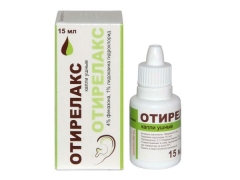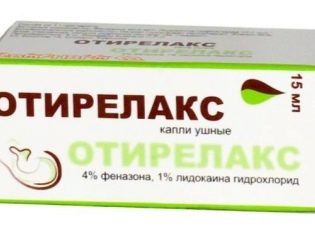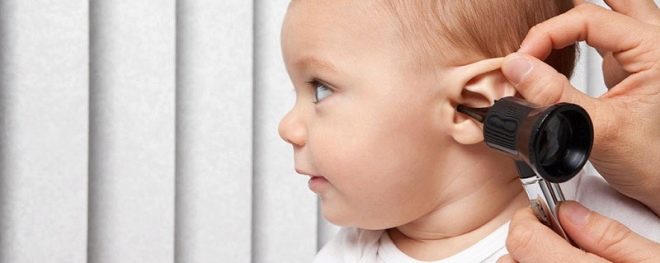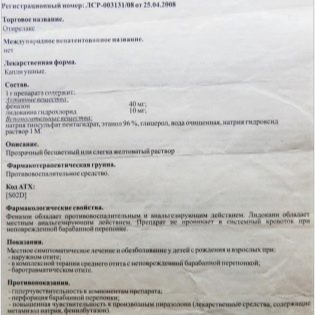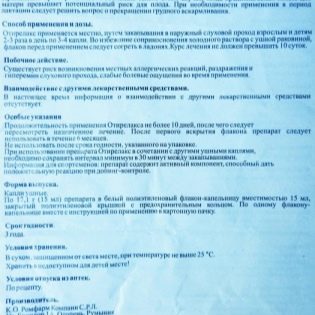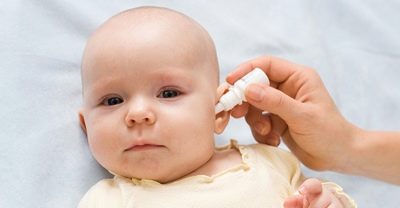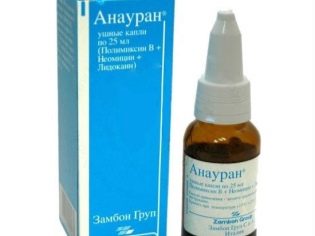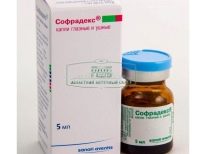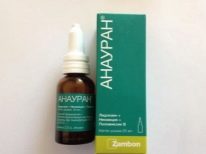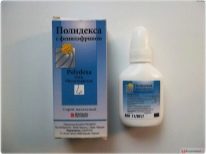Otyrelax for children: instructions for use
For ear diseases, local remedies are most often used, directly affecting the inflammatory process in the ear and helping to relieve pain. One of these tools are Otirelax ear drops. When they are used in children, how do they act and in what dose are they allowed in children?
Release form and composition
Otyrelax is a slightly yellowish or colorless liquid, completely transparent. It is placed in a 15 ml volume in a plastic dropper bottle and Includes two active ingredients:
- Lidocaine hydrochloride in the form of a dosage of 10 mg / 1 g.
- Phenazone - in the amount of 40 mg / 1 g
Additionally, the solution includes 96% ethanol, sodium hydroxide, water, glycerol, and sodium thiosulfate pentahydrate.
Operating principle
Otirelax reduces pain and helps to get rid of inflammation through a combination of local anesthetic (it is lidocaine) and analgesic-antipyretic (this means phenazone), which has both an analgesic and anti-inflammatory effect. Such components act together, with the result that anesthesia comes faster, and the duration and intensity of the analgesic effect increases.
If the eardrum is whole, the drug is not absorbed, but only acts locally.
Indications
Otirelax is used as a symptomatic agent in the treatment of:
- Otitis externa.
- Otitis caused by ear barotrauma.
- Otitis, which is a complication of the flu.
- Otitis media, if the eardrum is not damaged (the drug is prescribed in combination with other medications).
From what age is prescribed?
The use of Otirelax for ear diseases is allowed at any age. This drug can be used even in newborn babies.
Contraindications
Drip Otyrelax can not:
- if the eardrum is damaged;
- in case of hypersensitivity to any component of the droplets;
- with allergies to nonsteroidal agents of the pyrazolone group.
Side effects
Otyrelax can cause a local allergic reaction, and in some children there is a slight pain in the ear after instillation.
If redness, soreness or other side effects occur, you should immediately report them to your doctor.
Instructions for use
The drug is injected into the ear canal in a dose of 3-4 drops in each ear. Instill Otirelax should be twice or thrice a day.
Before use, the bottle is advised to hold it in your hand so that the solution warms slightly.
The duration of treatment with this drug is determined individually, but it should not exceed 10 days. If there is no improvement on the second or third day of application, the child should be shown to the doctor.
Overdose and drug interactions
The manufacturer does not give any data on the negative effect of the overdosing of the drug.
If Otirelax is prescribed together with other local drugs, then they need to be dripped into the ear with an interval of at least 30 minutes.
Terms of sale and storage
To purchase Otirelax at a pharmacy, you must show a prescription from an ENT or another doctor. The average price of one bottle is 170-180 rubles.
The shelf life of a sealed medicine is 3 years. Since opening the bottle, Otirelax can be stored for only 6 months. Keep the solution should be in a dry place where it will not find a small child. Storage temperature - not higher than +25 degrees.
Reviews
Parents and doctors call Otirelax an effective, relatively inexpensive and easy-to-use remedy. He is praised for local action, the possibility of assigning children of any age, a quick and rather long-lasting analgesic effect.
Negative side effects are noted in very rare cases.
Analogs
If a child has an ear injury and otitis media has appeared, other local medicines in the form of ear drops may be prescribed instead of Otirelax
- Otinum. Its basis is choline salicylate, which has an anti-inflammatory and analgesic effect. The drug is prescribed from 1 year.
- Otipaks. Such an analgesic antiseptic is used at any age, even in infants.
- Anauran. This medicine includes antibacterial compounds and anesthetic. It is prescribed for otitis in children older than a year.
- Sofradex. Such drops contain antibiotics and glucocorticoid hormone. They are applied from 1 month.
- Polydex. The composition of these drops also includes a combination of glucocorticoid and antibiotics. The medication is prescribed for otitis external to children of any age.
For information on how to properly bury drops in the ears of a child, see this video.
